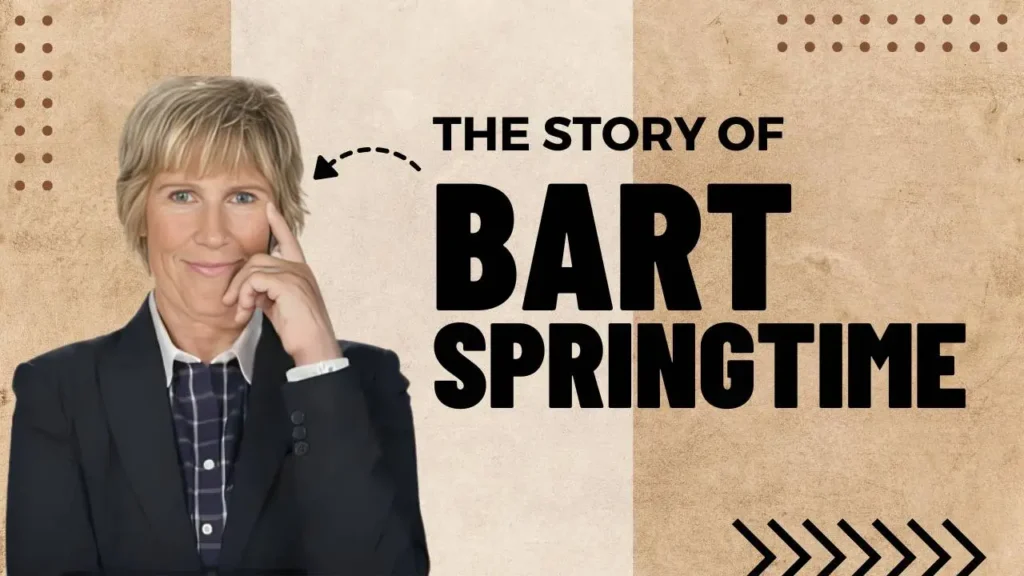Bart Springtime is a unique voice in the world of storytelling. Known for blending nature’s beauty with compelling narratives, his works offer a fresh perspective. Combining vivid imagery with solid and relatable themes, his stories captivate audiences. The connection between humans and nature is a central theme in his work. The simplicity in his storytelling helps create a universal appeal. His narratives resonate with readers of all ages. But what makes Bart’s work stand out is his ability to use nature not just as a backdrop but as a character.
Bart Springtime’s storytelling is not merely about the environment. He uses nature to reflect human emotions, challenges, and growth. Each story he crafts holds a deeper meaning, often exploring personal transformation through the lens of natural events or settings. His writing brings to life the idea that our world is alive and vibrant. It echoes our feelings, struggles, and triumphs in unexpected ways. Readers are often left thinking about their place within the natural world after finishing one of his stories.
A Deep Connection Between Nature and Storytelling
Nature plays a crucial role in Bart Springtime’s storytelling. It is not just a setting but an active participant in the story. How he describes landscapes, weather patterns, and wildlife often mirrors the internal emotions of his characters. Nature becomes a silent partner in the journey of the protagonist. This connection is profound, creating layers within his narratives. The storms reflect inner turmoil, while calm meadows represent peace or clarity. This symbiotic relationship between nature and human experience makes Bart’s stories timeless.
The natural world in Bart’s writing often serves as a metaphor. Rivers symbolize the flow of time and change. Forests may represent growth, both physical and emotional. Usually vast and open in his stories, the sky can signify freedom or uncertainty. Through these natural elements, Bart crafts a realistic and profoundly symbolic world. His readers are encouraged to look at nature not as something separate from themselves but as a mirror of their own lives. The integration of nature and human experience makes his storytelling both intimate and universal.
Exploring Human Emotions Through Natural Elements
In many of Bart Springtime’s stories, emotions are deeply intertwined with natural surroundings. Characters often find themselves on journeys through forests, mountains, or seas. These natural settings serve as catalysts for emotional discovery. A character might face a literal storm while navigating their inner struggles. In another tale, a sunset might mark a moment of personal clarity. Bart’s ability to draw parallels between nature and human emotions sets his storytelling apart.
His characters are often on a quest for understanding, whether of themselves or the world around them. Nature, in Bart’s hands, becomes a tool for self-reflection. The seasons changing might parallel a character’s personal growth. A harsh winter could symbolize a time of hardship, while spring represents renewal and hope. The simplicity of these metaphors allows readers to connect emotionally, making Bart’s stories both relatable and deeply moving.
Simplicity in Language, Depth in Meaning
Bart Springtime’s writing style is simple but rich in meaning. He avoids complex language and convoluted plots. Instead, he focuses on creating clear, straightforward narratives. This simplicity allows for a deeper exploration of themes and characters. Bart’s approach makes his stories accessible to a wide range of readers. His work speaks to those looking for entertainment and thought-provoking content, whether young or old.
What makes Bart’s simplicity effective is the emotional depth behind it. His writing is clean, but the ideas he presents are complex. He touches on universal themes like love, loss, and self-discovery. He adds layers of meaning to these themes through nature without overcomplicating the narrative. The balance between simplicity and depth makes Bart’s stories enjoyable and thought-provoking long after turning the last page.
Relating to Readers of All Ages
Bart Springtime’s stories appeal to a broad audience. His themes of nature, personal growth, and emotional discovery resonate with younger readers and adults. Children are drawn to the vivid imagery and the adventure in his tales. Conversely, adults appreciate the deeper layers of meaning and reflection on life’s complexities. Bart’s ability to write stories that speak to multiple generations is one of his greatest strengths.
This universal appeal is partly due to the simplicity of his writing but also because of the themes he explores. Everyone can relate to feelings of wonder, loss, or hope, regardless of age. His stories often feel timeless, rooted in the natural world but deeply human in their emotional core. This broad appeal allows Bart to create connections with readers across different life stages, making his work enduring and impactful.
Bart’s Unique Style: Bridging Nature and Human Stories
Bart Springtime’s writing bridges the gap between nature and human experience organically and effortlessly. His stories flow naturally from the environment, using landscapes, weather, and animals to enhance the human narrative. This technique creates an immersive reading experience. The world around his characters is not passive but actively shaping their journey. Bart’s ability to weave natural elements into his storytelling makes his work stand out in the literary world.
The relationship between humans and nature in Bart’s stories feels genuine. He views the natural world as integral to human life, not just as a setting. This perspective is what gives his work a refreshing and unique quality. His readers are encouraged to see nature in a new light, as something alive and dynamic, much like the characters themselves. Blending nature and human stories is a hallmark of Bart’s style, making his writing engaging and thought-provoking.
Nature as a Character in Bart’s Stories
Bart Springtime treats nature as a backdrop and a character in its own right. This approach gives his stories a dynamic quality. His tales’ rivers, mountains, forests, and skies often interact with the characters meaningfully. A storm might push the protagonist to confront their fears, while a sunny day could signal a moment of happiness or achievement. Nature’s presence in Bart’s work is active, not passive.
This technique allows Bart to create stories where the environment plays a crucial role in the narrative. Nature is not merely a setting but an influencer of events. This dynamic relationship between characters and their surroundings makes his storytelling feel more alive. Readers are drawn into a world where everything has a purpose, even the smallest leaf or gust of wind. This attention to detail and the role of nature make Bart’s stories stand out from others.
Personal Growth Reflected in the Changing Seasons
Seasons play a significant role in Bart Springtime’s stories. He often uses the changing seasons to symbolize personal growth or emotional transitions. A character might start their journey in the dead of winter, only to find resolution in spring blossoming. This use of seasons as a metaphor for change is a recurring theme in Bart’s work.
Often harsh and cold, winter can represent difficult times or emotional struggles. Spring, on the other hand, symbolizes renewal, hope, and new beginnings. Summer brings warmth and fulfillment, while autumn can signify reflection and letting go. Bart’s skillful use of seasons grounds his stories in nature and adds emotional depth. Readers can easily relate to these seasonal changes, reflecting their life experiences.
Conclusion
Bart Springtime offers a fresh, thoughtful approach to storytelling. Using nature as an active participant in his narratives adds depth and meaning to his work. Bart Springtime storytelling resonates profoundly, whether it’s the changing seasons symbolizing personal growth or a storm reflecting inner turmoil. The simplicity of his writing makes his stories accessible, but the depth of his themes ensures they stay with readers long after the last page. Bart Springtime is not just a storyteller; he is a bridge between nature and the human experience, creating a world where the two are inextricably linked.



